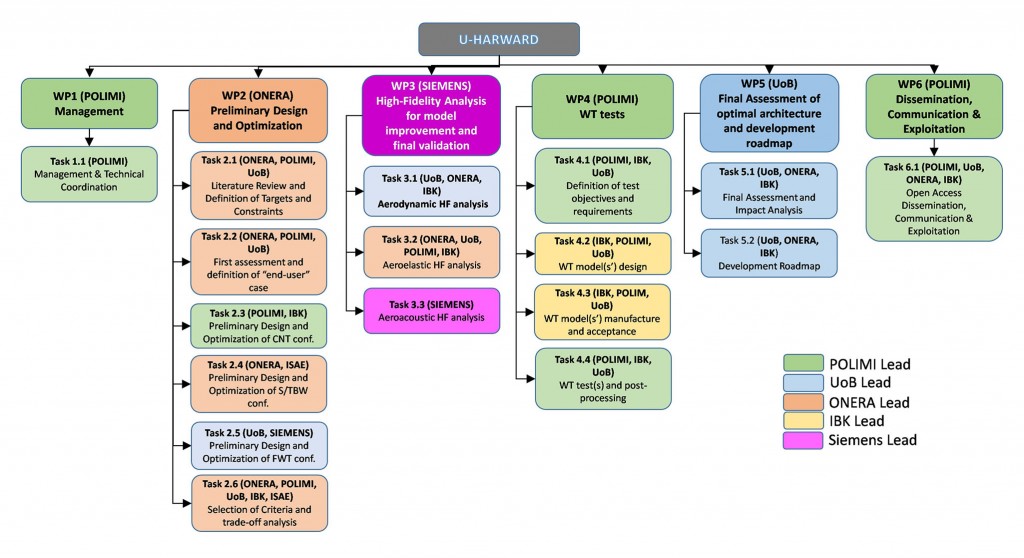U-HARWARD PROJECT
Ultra High Aspect Ratio Wing Advanced Research and Designs.
U-HARWARD will consider the use of innovative aerodynamic and aeroelastic designs in a multi-fidelity multi-disciplinary optimal design approach to facilitate the development of Ultra-High aspect ratio wings for large transport aircraft. A conceptual design study, building on the current state of the art, will perform trade-off studies to determine the potential gains of different wing configurations and loads alleviation concepts in terms of aerodynamics, weight, noise, fuel-burn and range. Scaled model wind tunnel tests will be used to validate parametric variations in the aerodynamic and acoustic characteristics. Starting from a reference aircraft, the preliminary design of the best candidate configuration will be completed and the estimated gains validated using high fidelity tools and a larger scale aeroelastic test.
U-Harward Project
Ultra High Aspect Ratio Wing Advanced Research and Designs
U-HARWARD Project, in response to the call JTI-CS2-2019-CFP10-THT-07: Ultra-High Aspect ratio wings, deeply investigates different aircraft configurations based on actual and future technologies aiming at increasing the level of achievable aspect ratio but at the same time mitigating the weight penalties to maximize the potential benefits in terms of aircraft global efficiency, while remaining compliant with the operational constraints such as handling qualities, fuel capacity, noise levels and airport compatibility, and defining a consistent integrated aircraft concept including every side effect of this aspect ratio increase.
In particular, three main configurations will be investigated by means of integrated, multi-disciplinary aero-structural approaches, based on the combination of multi-fidelity aerodynamic and structural tools, validated by dedicated experimental activities, to compare and classify the potential benefits such as global efficiency and environmental impacts in terms of potential aeroacoustic and NOx emissions. Having as a reference a typical 200 pax medium range aircraft (A32X type), the three configurations taken into consideration during the project are the following: the classical cantilever wing, the cantilever wing equipped with folding tip devices and the truss-braced wing. In the following, a brief description of the motivations and SoA of the researches for each configuration is reported.
U-HARWARD aims at using innovative aerodynamic and aeroelastic designs in a multi-fidelity multi-disciplinary optimal design approach to facilitate the development of Ultra-High aspect ratio wings for large transport aircraft. A conceptual design study, building on the current state of the art, will perform trade-off studies to determine the potential gains of different wing configurations and loads alleviation concepts in terms of aerodynamics, weight, noise, fuel-burn and range. Scaled model wind tunnel tests will be used to validate parametric variations in the aerodynamic and acoustic characteristics. Starting from a reference aircraft, the preliminary design of the best candidate configuration will be completed and the estimated gains validated using high fidelity tools and a larger scale aeroelastic test.





